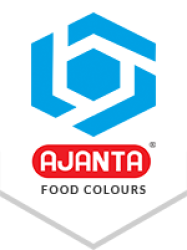_1744878769.jpg)
In today’s competitive market, manufacturers are under constant pressure to create visually appealing products that increase their product sales while maintaining their quality, consistency, and profitability. One of the biggest challenges manufacturers often face in choosing the right colour for their product is whether to use synthetic food colours or natural food colours. While the clean-label trend has fueled demand for natural colours, synthetic options still dominate many industries—and for good reason.
So, the big question is: Which type of food colouring is better for your brand? Let's break it down and understand all the aspects of this article.
Understand the Basics of Both Colourants
Synthetic Food Colours
Synthetic food colours are man-made dyes that are prepared in laboratories. They are typically derived from petroleum sources, and they are approved by various governmental bodies around the world that check the quality and safety of colours for human consumption in food, cosmetics, pharmaceuticals, or any product that directly interacts with humans. Regulatory authorities like the U.S FDA (Food and Drug Administration) in the United States, EFSA (the European Food Safety Authority) in the European Union, and FSSAI (Food Safety and Standards Authority of India) in India are the responsible governmental bodies. Examples of common synthetic food colours include Tartrazine (Yellow 5), Sunset Yellow FCF, and Brilliant Blue FCF Dye.
Natural Food Colours
On the other hand, Natural food colours are any dye, pigment, or any other substance that are extracted from various type of natural sources like fruits, vegetables, plants, insects, algae, and minerals. Some of the colour examples of natural food colours include beetroot red, turmeric, spirulina, and paprika extract.
Colour Vibrancy and Consistency
If you are a manufacturer of candies, beverages, baked goods, or processed foods the visual appeal of product play a crucial role in attracting the attention of consumer and convence them for purchase. Synthetic food colours offers vibrant, stable, and uniform colours for products that maintain product appearance in high-heat or low-pH conditions. Natural food colours, while they are attractive may fade or change over time on product and also vary between batches.
Advantages of Synthetic Colours: Longer shelf life, batch-to-batch consistency, and bright shades that stand out on shelves.
Limitations of Natural Colours: Colours may dull over time and react to light, heat, or pH changes—impacting product quality.
Cost and Supply Chain Efficiency
Manufacturers often face the cost problem—let’s face it. Manufacturers can overcome the cost problem by using synthetic food colours in their products as these colours are more economical with higher tinctorial strength, which means a smaller amount of synthetic food colour can achieve the desired colour shade. These colours are also more readily available and scalable, making procurement smoother.
Synthetic Advantage: Lower production costs, reliable availability, and global sourcing.
Natural Limitation: Prices fluctuate based on crop yield, climate, and extraction processes. Scaling up can be costly.
Regulatory Compliance
Both colours whether they are synthetic or natural must meet strict regulatory standards. However, synthetic colours often come with precise usage limits and labelling requirements in comparison to natural ones. It’s also vary from country to country, like in which country what kind of regulations are on colours and which colours are used in the country. For instance, some colours are approved by the FDA that are used in the United States while the same colour are not permitted to be used in other countries like the EU, India, or China.
Manufacturer Tip: Always verify permitted colourants in your target export markets, especially if you're using synthetic dyes.
Clean Label Demands – Are They Everything?
The "clean label" movement has caused many brands to shift toward natural ingredients. But it’s essential to ask: Is your target market demanding it? Natural colours align with the clean label trend, but they can come with formulation challenges, higher costs, and shorter shelf life that impact the sale of products.
Balanced Approach: Manufacturers should offer both versions of colourants—natural for organic products and synthetic for standard and premium products to cover all the colours related demand of the market.
Real-World Insight: If your product is price-sensitive and requires vibrant and appealing colour shades to standout in the competitive market, so you can go with synthetic colours that offers the best results without compromising margins.
Brand Positioning and Consumer Perception
In case you are aiming for natural products and plan to market your brand as health-conscious, organic, or natural, then food colours from nature will fit best for your brand. However, if you are marketing a product that requires bold flavors, low cost, or long shelf life, then the best option for you is synthetic food colours.
Know Your Customer: Perception about the consumers differs from region to region, product type, and through marketing and advertising. A one-size-fits-all approach doesn't work here.
Final Verdict – Which Is Better for Your Brand?
There’s no universal winner. The better choice depends on many factors including:
- Your product category
- Cost constraints
- Target market expectations
- Regulatory environments
- Brand positioning, etc.
Let's break down in a more easy way to understand the criteria for natural and synthetic food colours.
| Criteria | Synthetic Colours | Natural Colours |
| Colour Intensity | High and consistent | Mild to moderate |
| Shelf Life | Long-lasting | May degrade over time |
| Cost Efficiency | Budget-friendly | More expensive |
| Formulation Flexibility | High heat and pH tolerance | Limited stability |
| Labeling Appeal | May require cautionary labels | Clean label friendly |
| Global Approval | Region-specific restrictions may apply | Often seen as safer by consumers |
Conclusion: Make an Informed Choice, Not a Trendy One
Before switching to the natural or synthetic food colours, weigh all the aspects that impact your product including performance to cost-efficiency, consumer expectations, and global regulations. Don’t jump on the natural bandwagon just because it’s on trend. Make the switch only if it makes business sense.
Pro Tip for Manufacturers: Consider a dual approach—offer clean-label products with natural colours and maintain your core line with synthetics to meet different market demands.
Need Help Choosing the Right Food Colour?
The right colouring solution is crucial to brand appeal for manufacturers of dairy products, pharmaceuticals, bakery goods, and beverages. If you find yourself stuck deciding which way to go, we will consider your product, process, and market and help you make the right choice.
Let’s talk colour! Contact us today for expert guidance on synthetic and natural colouring solutions tailored for manufacturers like you.




